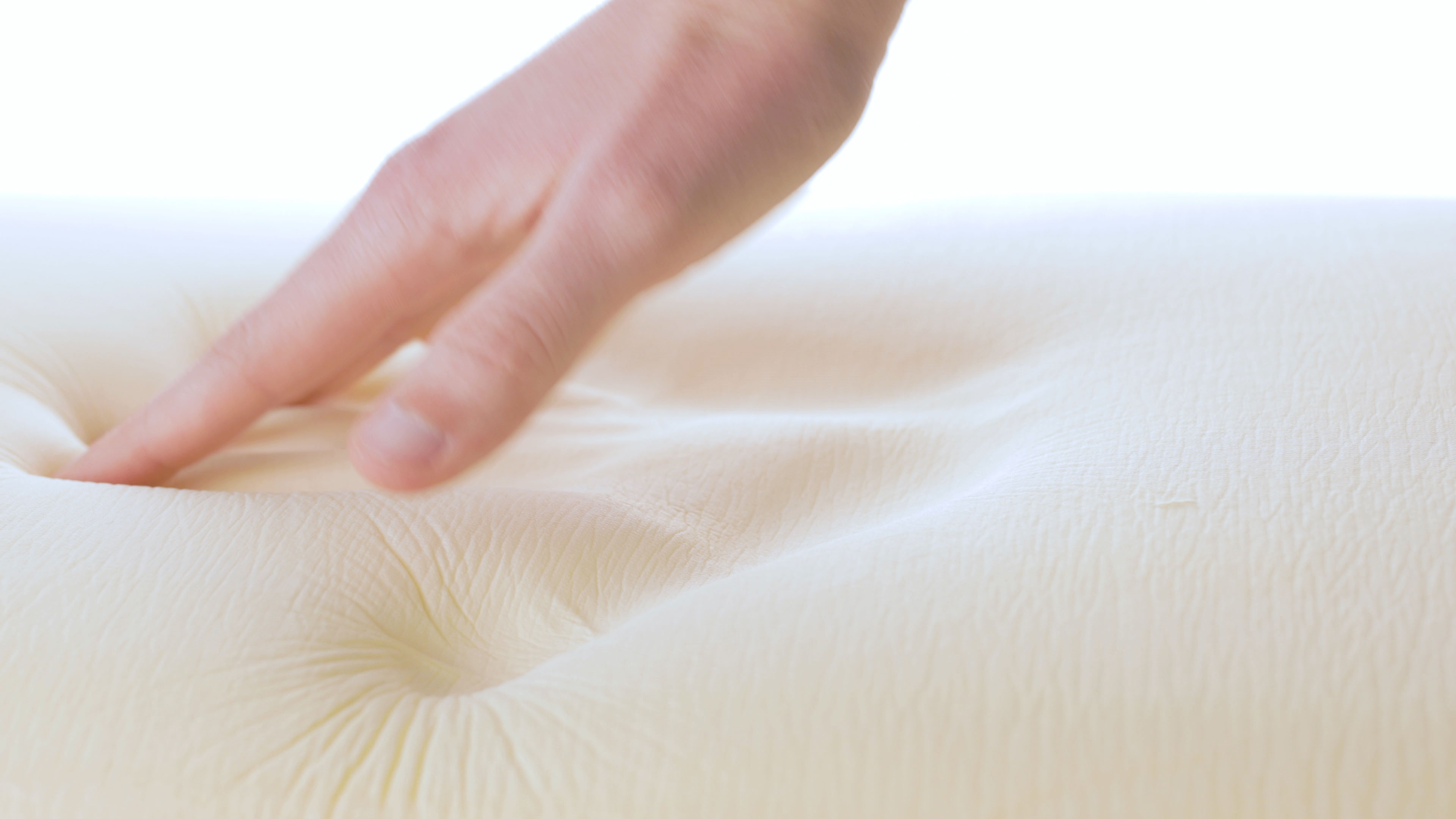
Hybrid mattresses combine the body-cradling comfort of memory foam with the responsive support of springs or coils. Because of this magic combination, they are often mistaken as the one type of mattress that suits everybody. However, that isn't always the case. So if you currently own a hybrid and have noticed a big dip in your sleep comfort and quality, the best mattress for your body and sleep needs (and budget) might actually be made entirely of foam, for reasons we'll cover here.
In fact, many sleepers will benefit more from the contouring and sink-in softness of a memory foam mattress rather than one made of coils too. On average, all-foam beds also offer better motion isolation (good news for bedsharing couples) and tend to be more affordable. And if you do decide to switch, we've also rounded up the best Presidents' Day mattress sales on memory foam mattresses to shop now.
Here are the common signs that you should be sleeping on a memory foam mattress, not a hybrid bed...
What is a memory foam mattress?
The best memory foam mattresses are made entirely from memory foam, a soft material that uses your weight and body heat to contour to your shape, and other foams. The memory foam portion is usually infused with gel and included in the top layer for a cushioning, cooling sleep surface. Other types of foam are included in the other layers, such as HRX foam for body support. Some of the top-rated memory foam brands include Nectar Sleep, Siena Sleep and Casper.
Memory foam beds mould around your body to cradle and soothe joint pain and alleviate pressure points. Because its so good at cushioning your knees, hips and shoulders when lying on your side, memory foam is usually found in the top mattresses for side sleepers too.
Memory foam mattresses do have drawbacks for particular sleepers. For instance, they can be too soft to support heavier back, stomach and combination sleepers, while hot sleepers may find that this heat-absorbing material is just too warm at night. However, a lot of all-foam beds nowadays use cooling technology to dissipate heat, plus they come in different firmness levels to support different body weights and sleeping positions.
Overall, memory foam mattresses are great for :
- Side sleepers who need contouring along the shoulders, hips and knees
- Lightweight sleepers who want a softer bed
- Couples in need of strong motion isolation
- Sleepers craving sink-in softness
- Shoppers looking for a budget bed

What is a hybrid mattress?
While memory foam mattresses have an all-foam design, hybrid uses layers of foam with a tier of springs or coil for extra support. These mattresses tend to be much more expensive than all-foam beds, and luxury mattress brands such as Saatva and DreamCloud are usually behind the best hybrid mattresses for most people.
While these versatile beds are often billed as a great choice for everyone, they actually tend to be best for certain sleepers as follows:
- Back, stomach and heavyweight sleepers who want a firm mattress
- Combination sleepers who need a responsive surface
- Hot sleepers who need a mattress with good airflow
- People with lower back pain who need proper spinal alignment
Despite their supportive structure, temperature regulation, and bounce, hybrid mattresses aren't actually for everyone. They can lack the sink-in softness, motion isolation, deep pressure relief of memory foam beds, despite their reputation for being ideal for every sleep style.
5 signs you should buy a memory foam mattress, not a hybrid
1. Your spring-based mattress is too hard
While the foam layers in a hybrid offer more comfort and softness than a traditional innerspring, a lot of hybrid beds are designed to add firm support (most hybrids have a firmness rating that lies between 6 and 9 out of 10).
This classic medium-firm to firm feel of a hybrid may be too hard for some, especially lightweight sleepers (those who weigh under 130lbs) and side sleepers (who need extra pressure relief along the shoulders and hips). If you find that your mattress lacks softness, it may be time to switch to a memory foam bed.
2. It’s become too bouncy and noisy
Hybrids springs contain springs or coils, which add bounce to a mattress. This responsive sleep surface is a good thing for restless or combination sleepers, but annoying for others.
While springs do lose their firmness to bounce back over the years, they also have a tendency to wear out quicker than foam materials. When springs start to degrade, they begin to creak when you move about or get up. You may even find the creaking gets louder over time. Memory foam mattresses, on the other hand, don't wear out as quickly and don't become noisy or creaky over time.

3. You can feel every movement your partner makes
When your partner moves around and you can feel their movements on your side of the bed, this is called motion transfer. Memory foam is a slow-moving material, meaning it can absorb movements and limit motion transfer so you won't be disturbed at night by a restless co-sleeper.
While hybrids do contain memory foam, their springs or coils are very buoyant, responsive, and sometimes noisy, meaning you may feel and hear your partner every time they move.
4. Your shoulders and hips hurt when side sleeping
While hybrid beds are designed to offer the best pressure relief, some focus on reducing pressure for stomach and back sleepers. This kind of pressure relief involves firmly supporting the hips so they're aligned with the spine and weight is evenly distributed. However, this firm pressure relief is not the cushioning kind that side sleepers need — it's too firm.
If you sleep on your side and wake up with joint pain in the shoulders, hips, and knees, then it may be because the pressure points in these regions aren't being cushioned or soothed. Memory foam mattresses are great for adding some extra plushness and padding under the hips and shoulders, so the mattress feels soft and cradling rather than hard and painful.

5. You want to feel 'hugged' by your mattress
The tier of springs and coils make hybrid surfaces responsive, which means it's ready to immediately bounce back whenever weight is lifted off it. While this level of responsiveness is great for combination sleepers and those looking for a bed with great edge support, it does mean that hybrid beds can lack that sink-in body-hugging comfort that memory foam possesses.
Can a mattress topper make a difference?
The majority of the best mattress toppers are designed to make firm mattresses softer, which makes them a great affordable stopgap if you want to switch from a hybrid to a memory foam bed without buying a full-fledged mattress. As most mattress toppers are made from memory foam, these toppers will afford you the cushioning comfort of a memory foam mattress for a fraction of the price.
That said, most memory foam mattresses are excellent value for price and are much cheaper than hybrids. Some of our top picks for the best cheap mattress are all-foam, and you can find some great options now for under $200.







